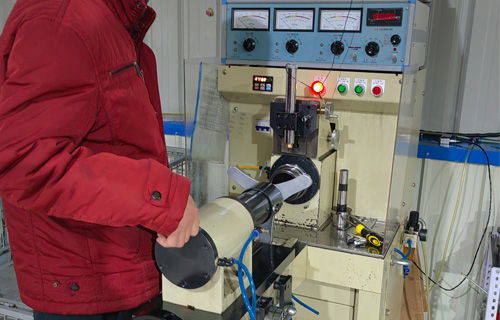
Nov . 22, 2024 00:59 Back to list
spherical roller bearing mounting
Mounting Spherical Roller Bearings A Comprehensive Guide
Spherical roller bearings are essential components in a wide variety of machinery and equipment. Offering high load capacity, alignment compensation, and the ability to accommodate axial misalignment, these bearings play a crucial role in ensuring the smooth operation of rotating shafts. Proper mounting is vital to maximizing their performance and lifespan, so understanding the intricacies involved in the mounting process is essential for engineers, maintenance personnel, and machine operators.
Understanding Spherical Roller Bearings
Before delving into the mounting process, it's important to grasp the basic structure and function of spherical roller bearings. These bearings consist of an inner ring with two raceways, an outer ring with a spherical raceway, and a set of symmetrical rollers. The design allows for self-alignment, accommodating both radial and axial loads while compensating for any misalignment that may occur during operation.
Preparing for Mounting
The first step in mounting spherical roller bearings is to ensure that the components are clean and free of contaminants. Dirt, dust, and debris can significantly impair the performance of the bearing. When handling the bearings, it's crucial to avoid touching the inner race and rollers with bare hands, as oils and contaminants from the skin can lead to premature wear.
Additionally, it's advisable to inspect the housing, shaft, and other associated components for any signs of damage or wear. Any imperfections should be rectified before assembly, as they can impact the bearing's operational reliability.
Mounting Procedure
spherical roller bearing mounting

1. Temperature Considerations The installation of spherical roller bearings often benefits from thermal expansion. One common method is to heat the inner ring before mounting it onto the shaft. This can be achieved by using an induction heater or a hot oil bath. The recommended temperature for heating is generally around 80-120°C (176-248°F), ensuring that the bearing expands adequately to fit onto the shaft without excessive force. Avoid direct flame or improper heating methods, which can cause damage to the bearing.
2. Alignment Proper alignment is crucial when mounting spherical roller bearings. The inner ring must be positioned precisely on the shaft, and the outer ring should fit smoothly into its designated housing. Misalignment can lead to uneven wear, increased friction, and ultimately premature bearing failure. A dial indicator or similar measuring tool can be used to verify alignment during installation.
3. Pressing the Bearing in Place Once the bearings are at the right temperature and aligned correctly, they can be pressed onto the shaft. It is recommended to use a bearing press or a suitable tool to apply even pressure when installing the bearing. Avoid hammering directly on the bearing as it can damage the raceways and rollers.
4. Sealing and Lubrication After mounting, it is vital to ensure that the bearing is adequately lubricated. Choose the appropriate lubricant based on the application and operating conditions. Grease or oil may be employed, and it’s important to follow the manufacturer's guidelines regarding the quantity and type of lubricant. Additionally, if the bearing has seals or shields, verify that they are installed correctly to prevent contamination.
5. Final Inspection After mounting and lubricating the bearing, conduct a final inspection. Check for proper rotation, alignment, and that there are no abnormal noises during operation.
Conclusion
Proper installation of spherical roller bearings is critical for ensuring optimal performance and longevity. By preparing adequately, following meticulous mounting procedures, and ensuring proper lubrication and sealing, operators can effectively reduce the risk of premature bearing failures and enhance the reliability of their machinery. Regular maintenance checks and monitoring will further contribute to maintaining the integrity and performance of these vital components in industrial applications.
Latest news
-
Premium Deep Groove Ball Bearings | High Speed & Reliability
NewsAug.29,2025
-
Durable Scaffolding Clamps - Secure & Reliable Tube Connectors
NewsAug.28,2025
-
Common Failures in Thrust Ball Bearings and Solutions
NewsAug.22,2025
-
How Tapered Roller Bearings Can Take Shock Loads
NewsAug.22,2025
-
Angular Bearings in High-Precision Spindles
NewsAug.22,2025
-
The Impact of Misalignment on Cylindrical Roller Bearing Performance
NewsAug.22,2025
